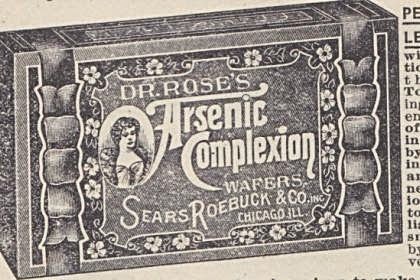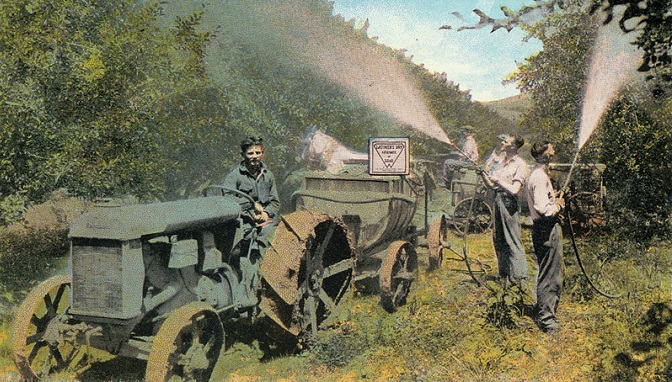Bloggers note: This blog is one in a series about lead arsenate and its historic use on orchard lands in Central Washington. Over the next several months we will engage a working group to help us to address this legacy pesticide, especially when those lands transition to new uses like housing developments, schools, and business ventures.
Take a look around your home — and think of the late 1800s. There were no microwaves or cell phones. People may not have had an indoor bathroom, let alone two or three. Your medicine cabinet may have contained various powders and remedies, among them over-the-counter heroin or mercury.
During the Victorian Era, wafers with added lead were thought to improve one's complexion.
Throughout history, lead has turned up in all sorts of products. For instance, the ancient Romans used lead to fashion pots and pans for cooking. Because it melts easily and shapes easily, the Romans lined their pipes with it and even today, lead pipes are still found in older homes.
By the late 1800s, the toxicity of lead was clearly apparent. However, because there were few alternatives that worked so well, it continued to turn up in common consumer products, like paint, jewelry, glass, and gasoline.
By the 1960s, we had concrete, scientific evidence showing how harmful lead exposure is for children. With the advent of laws designed to protect human health and the environment, lead-based paint was banned in 1978, and leaded gasoline was gone by 1995. Still, the legacies of lead remain today, with lead-laced soil along American highways and lead-based paints in older homes.
Putting lead and arsenic together — for agriculture
In the early 1900s, lead arsenate was the most widely used pesticide in the U.S.
This resulted in a buildup of lead and arsenic in the soils. As elements, lead and arsenic do not break down. They stay in the soil — and stay toxic — for decades after they were used. This is why they are called Legacy Pollutants.
At one point, lead arsenate was the most popular pesticide in the nation. The USDA recommended it broadly and millions of acres were sprayed with it across the country to protect crops. As farmers increased the frequency of application, concern likewise increased. Apples had to be soaked in acid to remove the residue.
Then came a product thought to be safer and more effective, prompting farmers to switch from lead arsenate to the new pesticide, DDT. Even though lead arsenate wasn’t widely used after the late 1940s, the heavy metals it comprises are incredibly persistent and still with us today. Moreover, both lead and arsenic tend to settle and stay in the top 12 to 18 inches of topsoil.
The result? More than 100,000 acres of former orchard lands across Central Washington contain varying levels of lead and arsenic contamination.
Next
Our next posts address what happens when the land use changes on former orchards lands, health concerns associated with lead and arsenic in soils, and what you can do at home to protect yourself from exposure.
First posted on Jan. 27, this blog has been edited to correct attribution errors and condensed for clarity.



